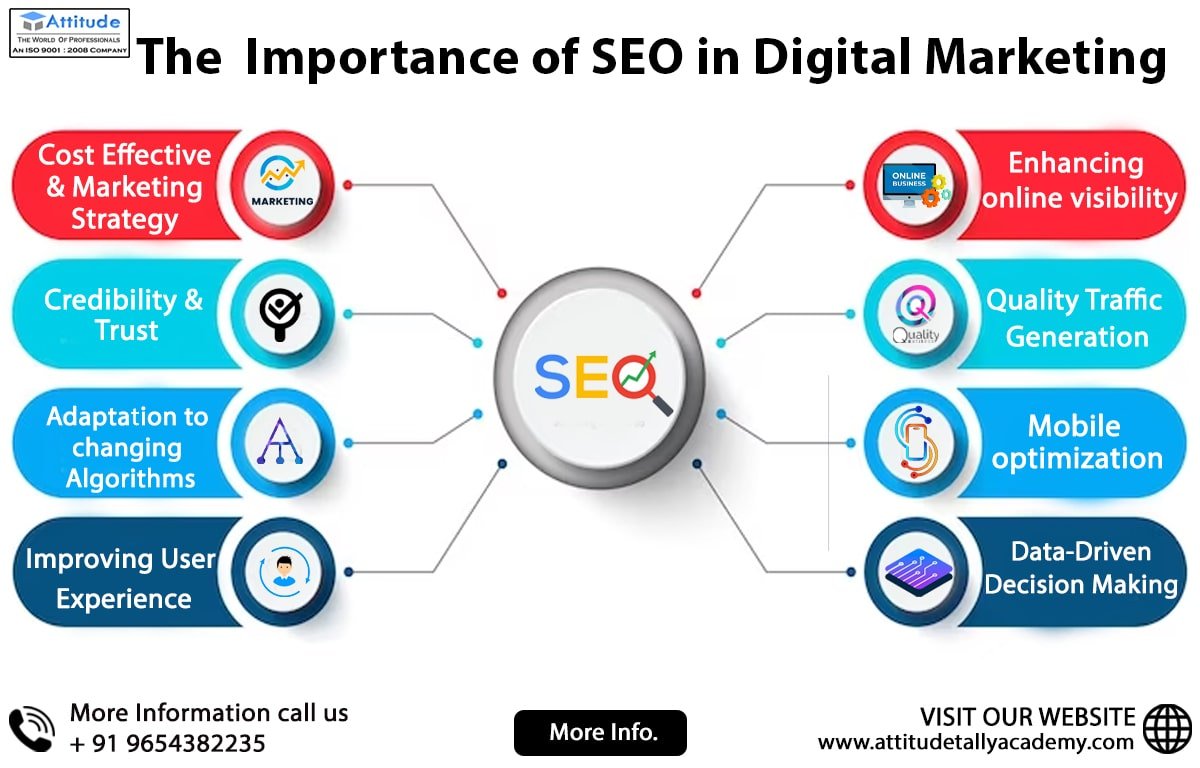Exploring the Latest Fads and Technologies in seo adelaide Practices
Exploring the Latest Fads and Technologies in seo adelaide Practices
Blog Article
Understanding the Function of Individual Experience in Modern SEO Practices
In an era where electronic presence can make or break a service, understanding the intersection in between individual experience (UX) and modern-day SEO methods is extra essential than ever before. As search engines develop, they increasingly prioritize sites that use smooth, engaging experiences to individuals. How do these components precisely affect search positions?
The Advancement of SEO
For many years, the landscape of search engine optimization (SEO) has undergone significant improvement, mirroring the dynamic nature of electronic innovation and individual habits. At first, SEO was primarily about keyword padding and link-building techniques, focusing heavily on adjusting search engine formulas to boost web site rankings. As search engines came to be a lot more advanced, these strategies began to shed efficiency and significance.

In addition, mobile optimization and voice search have come to be important parts of search engine optimization methods. With the expansion of smartphones, guaranteeing internet sites are mobile-friendly has actually become a necessity. Voice search, driven by digital assistants like Siri and Alexa, has even more moved search engine optimization methods towards natural language processing and conversational material.
Essentially, the evolution of search engine optimization mirrors a broader trend in the direction of enhancing user satisfaction by straightening electronic material with the nuanced assumptions of modern-day individuals.
Key UX Elements in Search Engine Optimization
In the world of search engine optimization, vital user experience (UX) aspects are essential for improving both user contentment and search engine rankings. Sites optimized for mobile use not just cultivate a seamless customer experience yet likewise straighten with Google's mobile-first indexing method.
Another essential UX element is engaging content layout. Material needs to be provided in a fashion that is both visually appealing and easy to absorb. This entails the strategic usage of headings, bullet factors, and multimedia elements, which can boost customer involvement and decrease bounce rates. Moreover, clear call-to-action (CTA) buttons direct users in the direction of wanted activities, boosting conversion prices. Ease of access can not be neglected; making certain that material is accessible to individuals with impairments broadens reach and complies with internet criteria. Integrating these UX elements efficiently sustains SEO initiatives by advertising customer retention and promoting search engine understanding of website web content.
Impact of Website Rate
While commonly taken too lightly, the impact of website speed on individual experience and SEO can not be overemphasized. A slow-loading website can lead to increased bounce rates, as customers are most likely to abandon a website if it takes more than a couple of secs to lots.
Moreover, site speed straight influences conversion rates and customer satisfaction. Research study indicates that also a one-second hold-up in page lots time can lead to substantial decreases in customer satisfaction and conversion possibility. This underscores the requirement for services to prioritize site speed optimization as part of their search engine optimization approach. Efficient steps include enhancing pictures, leveraging browser caching, and reducing HTTP requests. By resolving these technical elements, sites can improve their speed, thus improving individual experience and improving their SEO efficiency. Ultimately, investing in website rate is buying both client fulfillment and internet search engine presence, vital components in the electronic market.
Mobile-Friendliness Importance
Adapting to mobile-friendliness has actually become an essential component of effective SEO practices. As smart phones significantly control net use, online search engine like Google have moved towards mobile-first indexing, implying the mobile variation of a site is focused on in ranking formulas (seo adelaide). Mobile-friendliness is not merely a pattern yet a requirement this website in maximizing a website's internet search engine efficiency

Furthermore, mobile-friendliness impacts neighborhood SEO significantly. As customers commonly look for local information on-the-go, having a mobile-optimized site enhances visibility in local search results, driving foot traffic and conversions for companies. Web sites that fail to focus on mobile-friendliness risk shedding out on beneficial traffic, as individuals are much less likely to engage with sites that are challenging to browse on their mobile devices. As a result, integrating mobile optimization right into search engine optimization approaches is vital for sustaining affordable benefit in the electronic landscape.
Enhancing Navigating for SEO
As companies identify the requirement of mobile-friendliness in search engine optimization, one more pivotal facet arises: enhancing navigating - seo adelaide. Efficient navigating is critical as it directly affects customer experience (UX), which internet search engine progressively prioritize. A well-structured website makes sure that customers can easily discover the material they are looking for, decreasing bounce prices and enhancing dwell time, both of which are vital SEO metrics
To boost navigating, web sites have to take on a rational power structure that guides individuals flawlessly via material. This includes clear, concise food selection labels and an intuitive design, which jointly simplify the customer journey. Utilizing breadcrumb tracks can even more aid customers in recognizing their place within find out here now an internet site, cultivating a feeling of alignment and control.
In addition to assisting UX, structured navigating allows internet search engine spiders to index material more efficiently, improving visibility in search engine result. Executing inner linking methods can additionally strengthen search engine optimization by distributing page authority and promoting material discoverability. Furthermore, making certain navigating is responsive across devices assurances that customers take pleasure in a constant experience, important in today's multi-device world. Inevitably, enhancing navigation is not simply about visual appeals; it is a critical technique to maximizing both user interaction and search engine performance.
Final Thought
Incorporating user experience into contemporary SEO practices is vital for enhancing search engine positions and enhancing site performance. As online search engine focus on individual intent, critical aspects such as website rate, mobile-friendliness, and user-friendly navigation play an essential duty in meeting user assumptions. By concentrating on these facets, sites can reduce bounce prices and increase interaction, straightening electronic web content with customer needs. This tactical positioning ultimately causes boosted exposure and greater conversion prices in a progressively affordable digital environment.
In the realm of search engine optimization, crucial user experience (UX) components are important for improving both customer contentment this website and search engine positions. Incorporating these UX elements effectively sustains Search engine optimization initiatives by promoting user retention and helping with search engine understanding of site content.
As users commonly browse for neighborhood details on-the-go, having a mobile-optimized website improves visibility in regional search results, driving foot traffic and conversions for services.Including customer experience right into modern SEO methods is paramount for enhancing search engine rankings and enhancing internet site efficiency. As search engines prioritize customer intent, essential components such as website speed, mobile-friendliness, and intuitive navigating play an important role in conference customer assumptions.
Report this page